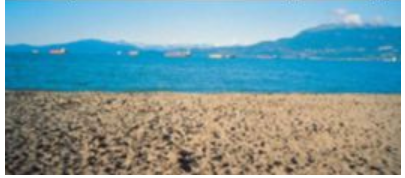Water - Worksheets
CBSE Worksheet 01
Water
Identify the ocean in the given figure

Pacific
Indian
Atlantic
Arctic
The water of the earth closer to the moon gets pulled under the influence of the moon's gravitational force and causes_____
- High tide
- Small tide
- Low tide
- Long tide
Dead Sea in Israel has salinity of 33.7 parts per thousand. Swimmers can float in it because
- The increased salt content makes it dense
- The decrease salt content makes it dense
- The increased salt content makes it lighter
- The decreased salt content makes it lighter
- How waves are differ from tides
- Waves occurs 10 hours a day while tides occur thrice times a day
- Waves occurs 10 hours a day while tides occur two times a day
- Waves occurs 24 hours a day while tides occur two times a day
- Waves occurs 24 hours a day while tides occur thrice times a day
Following movements occur in oceans except the movement of..........
Waves
Wind
Tides
Currents
Match the following:
(a) Pond (i) Warm current (b) Oceans (ii) 0.0001 (c) Rivers (iii) Saline water (d) Gulf stream (iv) Freshwater - Fill in the blanks:
Most of the salt found is ___________or the common table salt that we eat.
- State true or false:
Our Earth is like an aquarium.
Name the two types of tides formed.
What happened to the Indira point during the tsunami of 2004?
What are waves? Briefly Explain.
Differentiate between waves and tides.
What is a tsunami? Explain with the help of an example.
CBSE Worksheet 01
Water
Solution
- (a) Pacific Explanation: The ocean given in the figure is Pacific Ocean. The Pacific Ocean is the largest and deepest of Earth's oceanic divisions. It extends from the Arctic Ocean in the north to the Southern Ocean in the south.
- (a) High tide Explanation: The water of the earth closer to the moon gets pulled under the influence of the moon's gravitational force and causes
- (a) The increased salt content makes it dense Explanation: Dead Sea in Israel has salinity of 33.7 parts per thousand. Swimmers can float in it because the increased salt content makes it dense
- (c) Waves occurs 24 hours a day while tides occur two times a day
Explanation: 1.Tides are formed because of the interaction of the gravitational forces between the Earth, the moon, and the sun. 2.Waves are formed because of the gusting or raging force exerted by the wind on the water surface.
Thus, waves occur 24 hrs a day while tides occur only twice a day. - (b) Wind Explanation: Waves, current and tides are different movements of ocean. But not wind.
(a) - (iv), (b) - (iii), (c) - (ii), (d) - (i)
- Sodium chloride
- False
Spring tides and neap tides.
It got submerged.
A. Waves are the rise and fall of the water on the surface of the ocean. Waves are formed when winds scrape across the ocean surface.
B. The stronger the wind blows, the bigger the wave becomes. During the storm, the winds blow at very high speed and therefore huge waves are formed.
C. These waves are very strong, hence very destruction. They may cause huge devastation.
Differences between waves and tides are:
Waves Tides When the water on the surface of the ocean rises and falls alternately, they are called waves. The rhythmic rise and fall of ocean water twice in a day is called a tide. During a storm, the winds blowing at very high speed form huge waves. These may cause tremendous destruction. It is high tide when water covers much of the shore by rising to its highest level. It is low tide when waterfalls to its lowest level and recedes from the shore. - During a storm, the winds blowing at very high speed form huge waves.
- These waves can cause tremendous destruction.
- An earthquake, a volcanic eruption or underwater landslide can shift large amounts of ocean water. As a result, a huge tidal wave called tsunami, that may be as high as 15 m.
- The largest-ever tsunami was 150 m high.
- These waves travel at a speed of more than 700 km per hour.
- The tsunami of 2004 caused widespread damage in the coastal areas of India.
- The Indira Point in the Andaman and Nicobar Islands got submerged after the tsunami.
